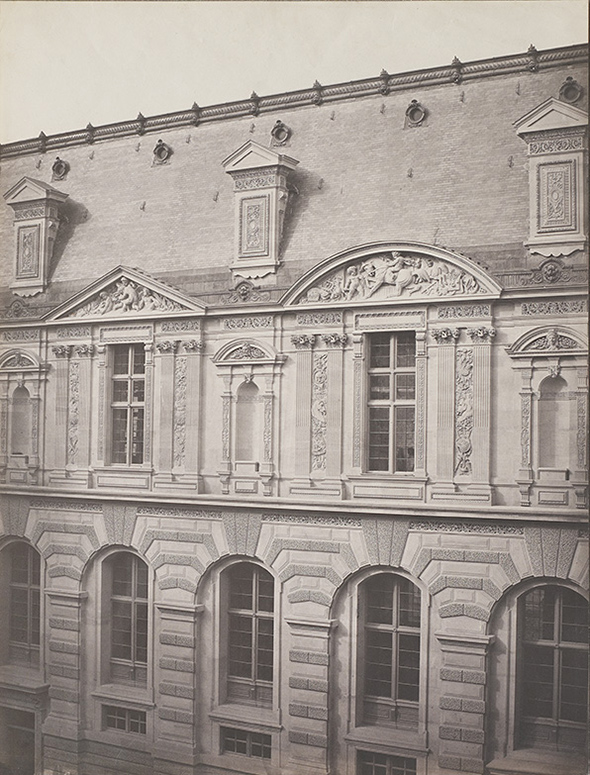
JULY 1–SEPTEMBER 23, 2018
ÉDOUARD BALDUS
FRENCH, 1813–1889
Édouard Baldus
French, 1813–1889
The Louvre
c. 1858
Salt print
Lent by The Troob Family Foundation
After modest success as an academic painter in Paris, Prussian-born Édouard Baldus turned to photography around 1848. As a co-founder of the Société Héliographique (1851), the first French photographic association, Baldus participated in the advancement of photography. He later joined the French Society of Photographers, a group of artists, writers, and scientists concerned with technical innovations in the medium. In 1851, Baldus became one of five photographers selected by the state-sponsored Historic Monuments Commission to make a photographic survey of France’s architectural heritage. Baldus recorded historical sites such as the Château de Fontainebleau, medieval churches of Lyon and the Rhône Valley, and the Pont du Gard and Maison Carrée in Provence.
The artistic strength of Baldus’s contributions to the assignment—called the Missions Héliographiques—earned him further government patronage. Under the auspices of the Ministry of Interior, he photographed progress on construction linking the royal Tuileries Palace with the western end of the Louvre, one of Napoleon III’s major building commissions. Between 1854 and 1859, Baldus documented the Louvre “stone by stone,” making more than 1,000 intricately detailed, large-format photographs of the extensive worksite. The emperor ordered custom-made albums of Baldus’s images from the office of Louvre architect Hector-Martin Lefuel, which were presented to members of the imperial family, foreign leaders, and select French municipal libraries.
Beginning in the 1860s, Baldus published photogravures (images produced from photographic negatives transferred to etching plates) of his sizable portfolio, creating invaluable visual aids for architectural restoration that, in the end, became an important lasting record of the Tuileries—the Paris Commune burned the palace in 1871 and city officials ordered its demolition the next decade.

